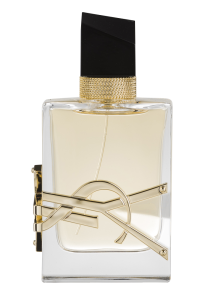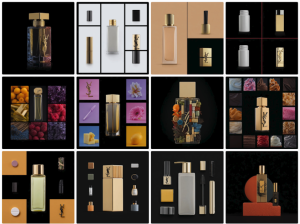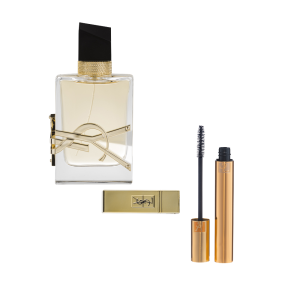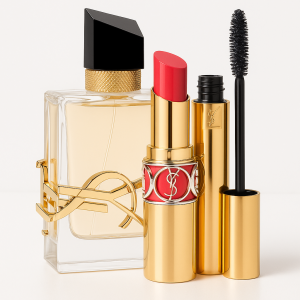Artificial Intelligence (AI) has become one of the most discussed topics in marketing today, bringing both excitement and confusion about what it can and cannot achieve within retail marketing. While AI is a powerful and transformative tool, it doesn't yet solve all marketing challenges. But its potential to streamline content creation, enhance productivity, and increase the scale of marketing output is clearly there. At Relayter, we are committed to empowering our retail customers by giving them practical and effective automation tools to create marketing content at scale. 'Generative' AI is the next big thing in that toolbox, but it has to add real value to the marketing execution process and not just become another gimmick. In this article we will clarify what generative AI can or cannot do for retail marketing content, and give our view on possible improvements it can bring in the near future.
Generative-AI vs Rule-Based rendering
Generative AI image models like DALL·E, Midjourney, and Stable Diffusion have revolutionized image creation, offering stunning visuals generated from simple text prompts. It gives us the opportunity to automate creative work, such as the creation of amazing mood or visual backgrounds in seconds, putting multiple objects in a visual engaging setting or create copywriting in any style. The output of creative work is quite impressive.
However, the devil is in the details. For retail and product-based marketing content like leaflets, banners, social video, or promotional flyers, pure generative AI has limitations. These materials often require specific and precise content formatting, such as clearly defined promotional mechanisms, accurate product details or brand guidelines. All of which currently generative AI cannot reliably deliver, even with very strict guidance.
To ensure such accuracy and dynamic output at the same time, Relayter uses a powerful condition and rule-based generation engine. Unlike generative AI image models, our system ensures content accuracy, precision formatting, and adherence to brand or commercial guidelines, critical for effective retail marketing materials. What this model currently lacks, is the ability to generate creative decisions. It will not suggest or advise you on what the best leaflet layout could be, or put products together in such a way that it is more engaging to the consumer. There is no machine-learning mechanism (LLM model) to provide that kind of generative output.
So both models have their pros and cons. The real challenge (and opportunity) for retail will be to harness the power of generative AI (LLM models) and combine it with data-driven and rule-based automation, to create accurate content output with a creative touch at an unprecedented scale.
AI enhancements in the near future
With this challenge in mind, we are continually exploring new opportunities to integrate valuable AI-features into our platform. After talking to our retail customers about their needs and thoroughly running over the various developments in AI with multiple stakeholders we have put the following AI-enhancements on our roadmap. These are items that we believe will be technically viable within the upcoming 12-24 months and bring a lot of value (ROI) to customers who want to increase their scale of marketing output with less workforce.
AI Text Optimization
We could integrate text-based (LLM) generative AI models to suggest engaging copywriting or automatically condense or extend headers and body text suitable for different marketing channels such as in-store POS materials, online PLP banners or circular print leaflets.
AI Product-group Image Compositions
When you have a retail promotion consisting of multiple brands or multiple products within a category, you need to create a product-group composition. Currently product-group compositions can be generated by Relayter with simple logic such as putting 3 products in a staircase or waiver layout. If you need a more creative composition, it will need to go to a DTP or Graphic designer. There’s potential to leverage generative AI to intelligently suggest optimal compositions of multiple product images (pack-shots) that need to be placed in a group setting. For retailers, AI could dynamically group a diverse set of products – such as mascara brushes and perfume bottles – by automatically recognizing size, shape, and packaging differences to create visually appealing arrangements.
AI Layout Compositions in our SVG engine
Expanding our SVG rendering engine with AI capabilities could allow for intelligent updates to your design layout. SVG is a widely recognized open format extensively documented online, making it easily understandable by generative AI (LLM) models without the need for extensive custom training. This gives our platform significant advantages, as generating and manipulating SVG-based designs through AI can be achieved more efficiently and accurately compared to closed or proprietary formats such as InDesign. AI could dynamically replace tagged elements or reorganize page layouts while preserving your established branding and design aesthetics with strict rules and conditions that are already available in Relayter rulesets.
AI Generation of Mood and Background visuals
Currently you need to pull design files out of the platform and edit it manually if you have the need for a nice background or certain mood visual to support a product or promotion. Using generative AI, we could enable mood image generation directly from user-provided text (prompt) inputs. This feature would empower marketers to quickly produce relevant, compelling visuals that align with their promotional messaging and retail brand identity. Think of a product promotion that needs to be placed on a background of a beach with a family playing in the sand. Or maybe create a stunning visual that enhances the feeling of a spread full of fashion items.
A first look at visual compositions with AI
We thought it would be an interesting exercise to see where the large generative AI models are when it comes to creating a reliable product-group composition image. So we tried a variety of generative AI platforms and have noted the most interesting results down from ChatGPT and Midjourney.
The prompt
I tried various prompts for optimal results, but in essence it came down to the following input:
These product images (also known as packshots) need to be placed into a group composition with the following parameters:
– The images should be resized in correct relation to each other; a smaller product is smaller than the bigger product.
– The images can be placed in a creative way; a product can be placed horizontally or vertically whenever this is possible.
– The images should not be altered; they should stay exactly the same without changes to color or perspective angles or ratios. Just resizing and turning is allowed.
The images I uploaded with the prompts:



Midjourney
Although this is an awesome tool to create stunning illustrative visuals, it clearly did not respond well to prompts and image inputs. It was not able to create a normal product composition in any way or form. It kept rendering highly illustrative visuals.

ChatGPT
OpenAI is one of the market leaders in LLM and generative AI. So this was our go-to tool to try and create some useful output. It gave some interesting results.


Although it ‘sort-of’ did what I asked, it was not visually pleasing or engaging in any way. Using rule-based rendering outperformed this in any scenario. But I did not want to give up and tried various prompts and methods. Removing most of the ‘parameters’ to keep Chat GPT in line, did create some interesting output.

It was love at first sight! This is what we all feel that the promise should deliver. But taking a closer look made it clear that all products were tampered with. To my sad conclusion, none of the original packagings were intact. And thus rendering this output unusable in any commercial retail environment. It is simply not an option to put out promotional marketing content with incorrect product imagery. I tried my very best to optimze the prompts to create similar output with stricter results on keeping the packshots original, but to no avail.
Final Thoughts
AI is without a doubt reshaping the way retail marketing content is created and delivered. While generative AI brings exciting opportunities for creativity and scale, its current limitations mean it cannot yet stand on its own when it comes to the accuracy, precision, and brand consistency that retail demands. The future lies in combining the best of both worlds; leveraging the creative spark of generative AI with the reliability and structure of rule-based automation. At Relayter, we believe this hybrid approach will unlock a new era of content creation: faster, smarter, and more impactful retail marketing at scale.
About the author
Simon Windt
Simon started out in ecommerce software development but soon found his passion in entrepreneurship. He successfully founded multiple tech startups and sold digital agency mediaBunker to CMN Group. He then co-founded spinoff company Relayter to solve the complex issues that come with large retail marketing content productions. Going from large datasets from multiple sources to automatic layout and design. His mission is to redefine and simplify how large retailers operate their marketing content execution.

